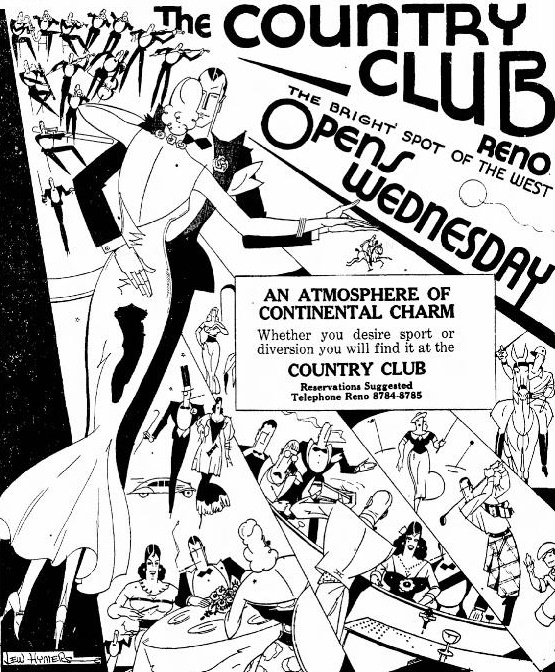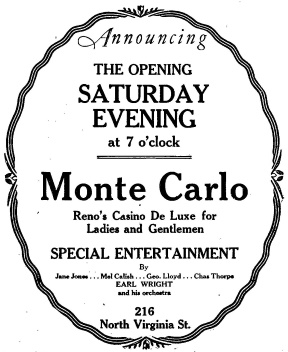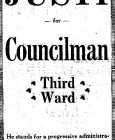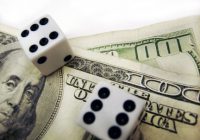|
Listen to this Gambling History blog post here
Getting your Trinity Audio player ready...
|

Ad in the Nevada State Journal, June 26, 1935
1929-1941
In the early decades of legal gambling in Nevada, Reno’s McKay/Graham combine expropriated legitimate business owners’ casinos in Washoe County.
The local Mob, headed by William “Bill” Graham and James “Jim” McKay, strove to dominate and control gambling in Reno without competition. Thus, anyone who wanted to open a gambling club had to seek their permission first, and the duo may or may not have granted it. Those who failed to ask for entry into the exclusive fraternity suffered dire consequences. Most times, McKay and Graham stole the business outright, but sometimes they infiltrated it and caused its demise.
Here are the stories of some gambling clubs that fell victim to Graham and McKay:
1) Country Club (in Reno)
With the backing of an ex-Nevada investor, Charles Rennie opened the Country Club in June 1935 on Plumas Street (between what today are Moana Lane and Urban Road).* At the time, Rennie was the gambling licensee for the Town House in downtown Reno.
“It was one of the most dazzling, exciting, and glamorous clubs ever opened in Reno,” wrote Dwayne Kling in The Rise of the Biggest Little City.
The $250,000 (a $4.7 million value today) establishment featured a restaurant, dance floor, polo grounds and tennis courts. The Bridge Room casino offered roulette, craps, 21 and slot machines. Following a debut for which 600 people made reservations to attend, the County Club was doing great business.
Graham and McKay sent one of their henchmen, Jack Sullivan, several times to tell Rennie he should talk to the duo, but Rennie refused, according to Al W. Moe in The Roots of Reno.
Then, only 1.5 months after the Country Club’s premier, Rennie announced he was abandoning it and returning to the Town House full-time. Eighteen days later, the Country Club closed. It reopened soon after with a Graham/McKay man, James Merrell, as the new general manager.
The next year, Rennie tried to take back his Country Club from the Mobsters, without success. Subsequently, on May 15, a fire erupted at 3:40 a.m., under a serving table in the kitchen according to the steward, the only person on the premises at the time. Fueled by strong winds, the conflagration reduced the facilities to rubble within two hours. The fire chief said the fire looked to have been set, but it never was proven. Despite promises by Merrell that the Country Club would be rebuilt, it wasn’t.

Ad in the Reno Evening Gazette, June 19, 1931
2) Monte Carlo (in Reno)
The Monte Carlo opened on June 19, 1931 at 216 N. Virginia Street and boasted varied casino games, 12 in all, including hazard, roulette, big six, craps, 21, draw and stud poker, panguingue, klondike and chemin de fer.
By the end of that year, it was shuttered. According to Harold Smith, Sr., who co-owned nearby Harolds Club, “No warning went to its owners. The clique simply infiltrated its thieves among the employees and stole the bankroll. The Monte Carlo Club was broke in three months.”
3) La Boite Amusement Palace (in Reno)
Clarence Shockey launched La Boite Amusement Park, a keno-pool parlor, on July 21, 1932, to great success. Three days later, a fire broke out in the garbage behind the building but was extinguished quickly, saving the business. On the eighth day after opening, Shockey uncharacteristically failed to show up at La Boite that night, and he never was heard from or seen again. The club re-opened under new management three days later. The full story is here.
4) The Cowshed (in Reno)
Shortly after Belle Livingstone opened The Cowshed, a nightclub offering gaming (21, roulette, craps), dining and dancing, Graham and McKay sent in their goons to drive her out. They did. The full story is here.
5) Harolds Club (in Reno)
Graham and McKay tried to close down Harolds Club in 1937, about two years after it opened.
One day, William A. Justi, third ward city councilman and police committee chairman, showed up at Harolds with two other councilmen, Harolds co-owner Harold S. Smith, Sr. described in his book. “They were there to examine our big roulette wheel hanging from the ceiling,” Smith, Sr. wrote. “The city’s ordinance imposed a tax on each gaming wheel. The Third Ward councilman was trying to persuade his colleagues to collect the tax instead on each of our 43 roulette layouts since they were placed from a single wheel. Fortunately, he wasn’t able to sell his plan. Forty-three licenses would have put us out of business.
“The real showdown came just before 10 AM a few days later when Raymond [Harold’s brother and co-owner] and I were alone in the place. Seven men sauntered in, all big, all sashaying from side to side to knock over whatever, or whoever, got in their way. I had heard through the grapevine our place was going to be wrecked. I was ready, though I would have liked to have had more witnesses. The men headed straight for Raymond standing behind the crap table, when I reached under the roulette counter for my loaded .38.
“‘You’re not going to shoot any dice,’ I declared, ‘so just turn around walk out that door.’ Not a tremor of vibrato was in my voice. I simply couldn’t stand there, aware of Raymond’s vulnerable mastoidal ear, and let them tear my brother apart or wreck the store. Had any of them taken another step, I’d have put a bullet near his feet and the next one into him.
“They halted and turned to face me. Anyone, I believe, knows when an armed man means to use his gun. They could see by the line of my lips I would use mine. They knew, furthermore, as I knew, that unless I faced them down, Harolds Club was through in Reno. Every hoodlum in the area would take his turn at clobbering us. We would be their mirth, out in the street dodging our furniture. If, on the other hand, they retreated before a gun, the psychological advantage was ours. We would have made our stand and the word would be all over town by noon. Public opinion might save us from further rough stuff. The seven men put their heads together in solemn pow-wow, turned stiffly and marched out the door. I took my clammy hand off the pistol grip and murmured a silent prayer.
“We were in Reno to stay though I continued to carry the gun and watch every shadow as I drove home nights.”
6) Cal-Neva Lodge (in Incline Village)
“Graham and McKay swept over Cal-Neva at Lake Tahoe in 1929,” Moe wrote in Nevada’s Golden Age of Gambling. As soon as they did, they offered gambling there, which was illegal until 1931.
The Cal-Neva also burned down in a blaze thought to be arson, in mid-May 1937, just before the start of the summer tourist season (the enterprise typically was closed between September and June). It was rebuilt and quickly, however. If Graham/McKay had the fire set, why did they choose that time? It may have had something to do with the opening of the nearby Ta-Neva-Ho.
7) Ta-Neva-Ho (in Crystal Bay)
When John “Johnny” Rayburn opened the Ta-Neva-Ho,** the Cal-Neva Lodge fire had raged two weeks earlier. “The opportunity to own his own club and enter the Nevada gambling scene caused Rayburn to sell the Buckhorn [restaurant]” at North Lake Tahoe,” wrote Bethel Van Tassel in Wood Chips to Gambling Chips.
However, suddenly McKay’s people were running not just the gambling at the Ta-Neva-Ho but the entire place. McKay himself got a gambling license for the casino for 21, craps, roulette, panguingue, slots and a race book.
The Mobsters’ thinking behind taking over the Ta-Neva-Ho likely was that gambling revenue from it would make up for monies lost during the Cal-Neva Lodge rebuild.
—————————–
* On the former Country Club property today is the Classic Residence by Hyatt senior living community.
** Rayburn later renamed the Ta-Neva-Ho the Crystal Bay Club.






